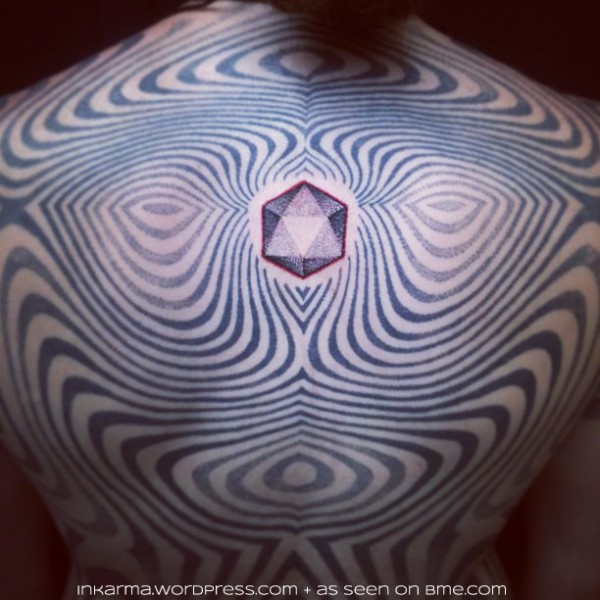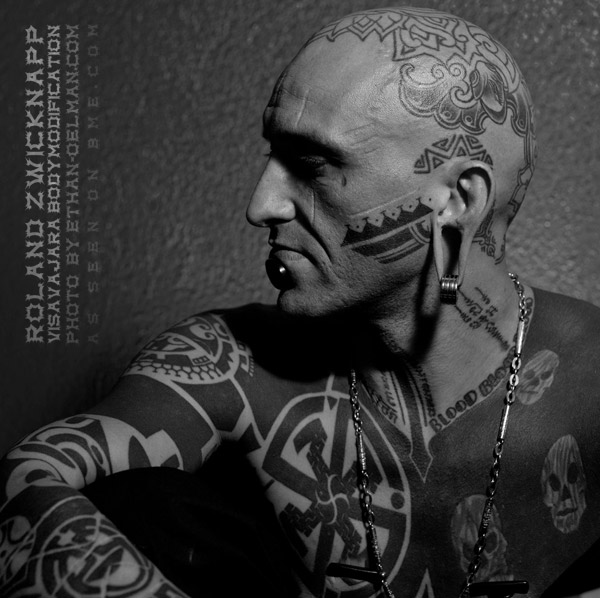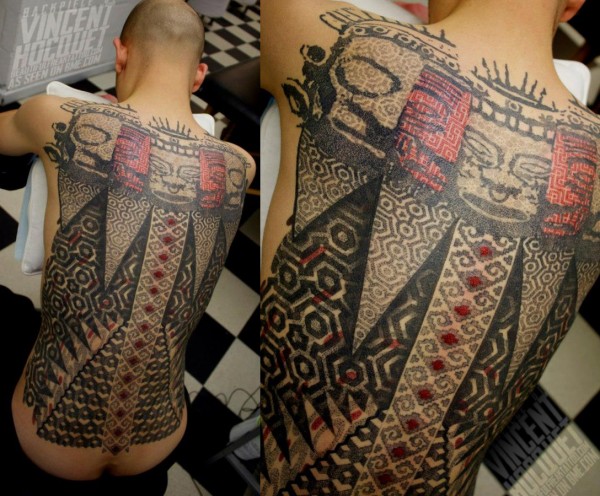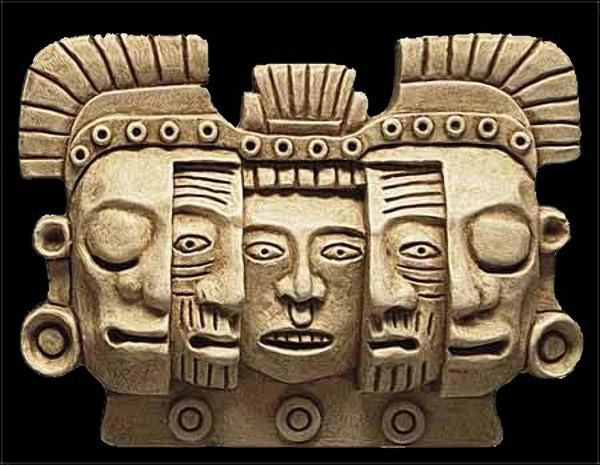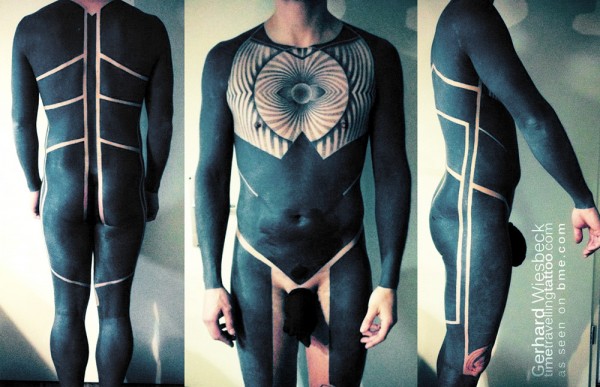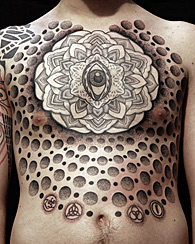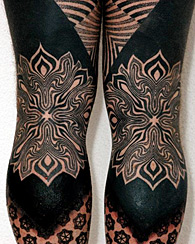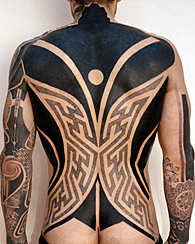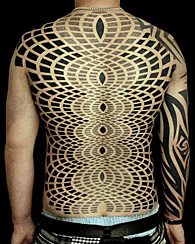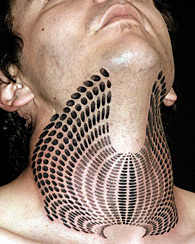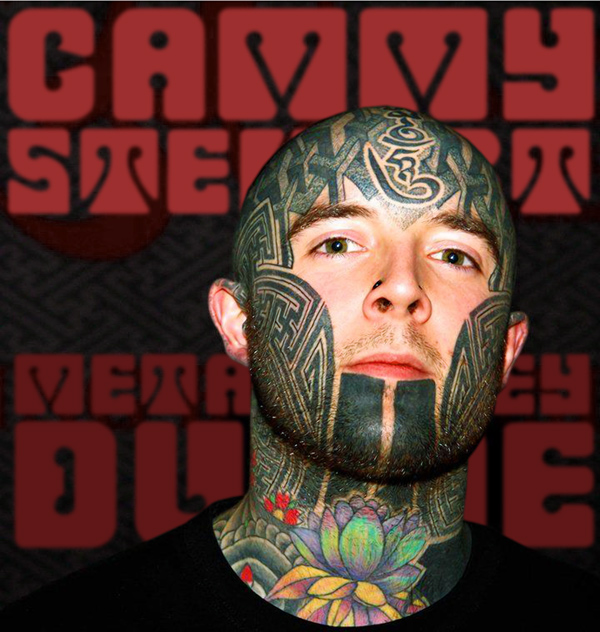
Cammy Stewart, whose work has been featured on ModBlog in the past, is a Dundee, Scotland based tattoo artist who started like most do — self-taught, tattooing anything they could on anyone they could find — but had an epiphany when he met neotribal, blackwork, and sacred geometry tattooing pioneer Xed LeHead at London’s Divine Canvas. He began merging this new style and philosophy of tattooing into his own, and became a part of what began with the idiosyncratic style of a small handful of outsider tattoo artists and has become a full-on art movement. Find Cammy at Metalurgey in Dundee, Scotland, online at facebook/cammystewart or instagram/cammytattoo, or email him at [email protected].
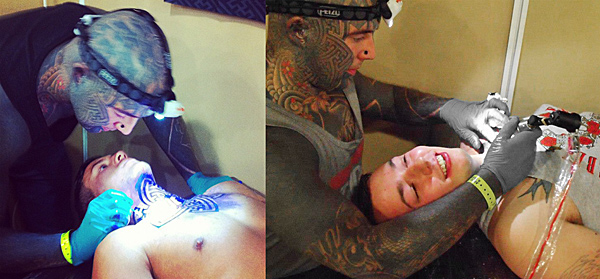
* How do you create the designs in your tattooing?
I design all pattern work I use for tattooing on Photoshop. Sometimes I draw sections by hand on paper, scan them, and then replicate or manipulate them using the computer until I’m happy with them. Any other drawing or layout for the tattoo is usually drawn directly on to the skin with a selection of pens until it is clean and easy to follow.
* Does the core of the design tend to come from you or from the client?
I like my clients to come in with a rough idea and let me do my own thing with it. The only time I like to have full creative control over a tattoo is when I either know the customer well and they trust me fully, or I get a vibe from them that they are open minded and genuinely don’t mind what I do.
People always say, “do whatever you want,” but I know deep down they don’t really mean it. If the client has existing tattoos that I have to work around or cover up this will also have a massive impact on the final design. I try to use this to my advantage and let it help with the shape, and the shape of the clients body can also influence what kind of design I use or how I place it.
In my opinion the body should be treated as a whole when possible. The un-tattooed space is as important as the tattooed space — how it fits, how it flows, how it becomes a part of the wearer and looks natural on them…
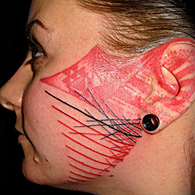
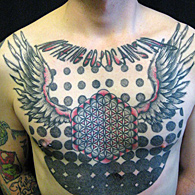
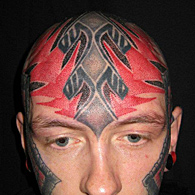
* Do you have a library of artwork that you do in advance and then look for clients for, or is it all drawn for the specific person?
I design everything for the client, and most of the decisions for the final design are done on the day. I don’t like knowing exactly what I’m going to do in advance as I feel this isn’t really the most creative approach — I like to work in the moment, for my life on that day to influence how I go about coming up with the design. It feels raw, and that’s what I get a buzz from.
I do make patterns and designs and keep them in folders on the computer for possible future use, and I also collect things I find that look interesting from books or online that I feel might be helpful for ideas or for reworking in Photoshop at a later date.
* Maybe a silly question, but why do you use almost exclusively red and black? It seems a common palette for this style in general.
The reason I choose red and black is because it is a striking combination — bold and raw, and it works well on the skin. No other colours have the same power for me. I’m not sure why they are popular as a whole though. I imagine for the same reasons that I’ve just described…
* How do you introduce individuality into designs that by their nature are somewhat repetitive?
Every day is like reinventing the wheel. People see my work and all want similar things done, but I try to persuade them that they should look beyond my previous work and do their own thing to something that will suit them — obviously I have my favourite patterns and motifs but I try not to overuse them.
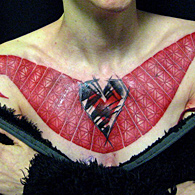

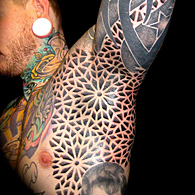
* What do you draw influence from as an artist?
I draw influence from everything — my family, my friends, day to day life, emotions from within myself and people I respect within the tattoo industry. I don’t really look at tattoo magazines these days and I try not to look at too much tattoo work online as I don’t want to draw to much from other peoples work. I’d much rather look at books on graphics, street art, and so on to keep my work is as original as possible and not have it be a copy of other artists’ work…
* What would you say to the criticism that geometric tattoos are, while technically advanced, are devoid of a certain artistry?
Art to me is a raw expression of ones self, a tool to communicate with people without language… and mostly something that makes people talk, so whether you like something or hate something, as long as you want to discuss it and it makes you think, then it has much artistry as a portrait or any other kind of tattoo. And really, “what is art?”
* How did you learn and mature as an artist?
It’s been a very long drawn out process. My background was in graffiti art so that obviously has has a big influence on the tattooing I am currently doing. However, when I started tattooing I didn’t have a clue about anything. I am self taught, so the first few years I was just learning the technical aspects through trial and error — I was tattooing whatever came my way really, wanting as much skin as possible to get better.
The biggest turning point for me was meeting my now good friend Xed LeHead from Divine Canvas. As he tattooed my face and head, I remember him saying, “you wear the sacred geometry, so why not take this path and explore it for yourself?”
It just seemed like the right thing to do as I had so much respect and admiration for his work and his take on tattooing and life in general. I felt at home around him and all of the wonderful people working alongside each other at his studio. He shared everything with me –machine knowledge, patterns, tattooing techniques, Photoshop use… the lot! It got me started with this form of art, and gradually, as I got more confident I put my own twist on it and used my own art background to help me develop further… I don’t feel this process will ever stop, and if it does I’ll stop tattooing.
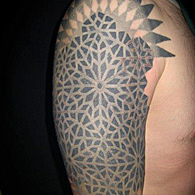
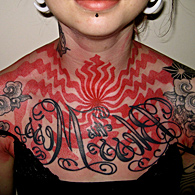

* Is it frustrating being seen as specializing in a specific style, or does that help you push it further than you could if you were a more “general purpose” tattoo artist?
I much prefer working in only one or two styles. I don’t feel you can be really good at everything — it’s impossible to be great at every style. I’d rather concentrate my brain on one thing and be the best I can be at it than be OK at many styles while never really excelling at any of them. Being an all rounder was never really my thing.
I also feel its easier for people to remember you and your work if you work within only one or two styles — it makes your work instantly recognizable. You could compare it to marketing a brand of anything. When I was still doing other styles, but was already changing from doing a bit of everything to specializing in one style, I felt it a good idea only to display in my portfolio the work I wanted people to come to me for rather than everything I’d done, so that in time people would know and accept that this is what I do.
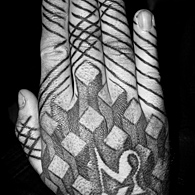
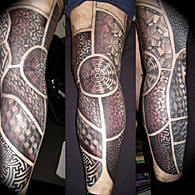
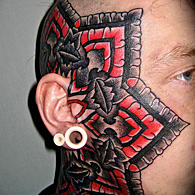
* How do you see you style evolving from where it is now?
The work will evolve as the customers evolve. Without people I am nothing. What I’ve been starting to find is, as more people see my work they are keener to give me larger spaces to work on and I have more freedom with design. Everything I do inside and outside tattooing helps me grow and evolve. Also, as equipment gets better it can make tattooing more fluid and allow me to cover more area more efficiently. Long term I would like to work on larger projects rather than small tattoos, but this will only happen when the time is right.
I think geometric/blackwork/abstract work will continue to grow as new artists enter this world and do their own take on it — the possibilities of it are endless with people who are prepared to take risks and push the boundaries of modern tattooing, ignoring all the conventional rules and thinking outside the box…
I just like to tattoo and want my customers to be happy with the final outcome… I want to make images that people remember and that fit the body well.
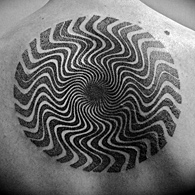
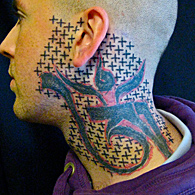
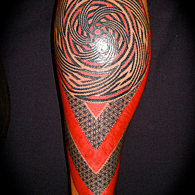
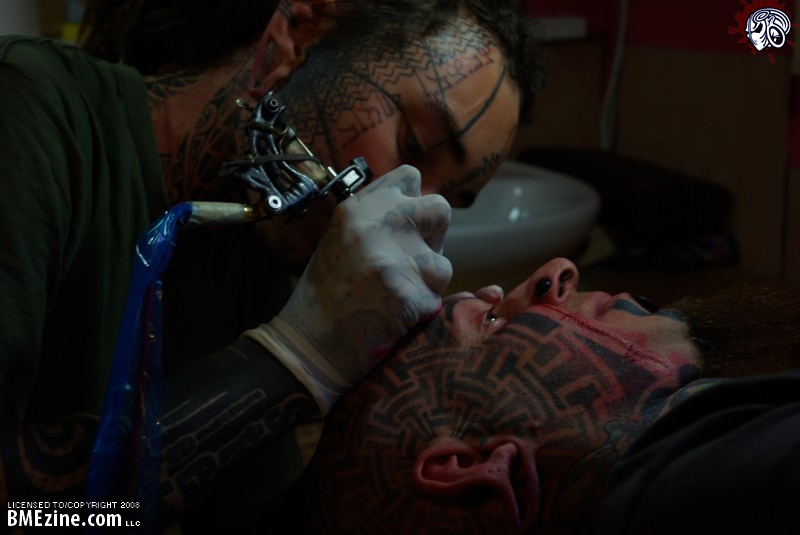 I have always been a huge fan of Marc’s work, and it has been featured heavily on ModBlog and in the galleries. There is a sort of a mystique around Little Swastika and his shop that I would be genuinely interested in learning a lot more about. The film will be a short 15 minute documentary about the four days the film makers spent in Zurich with Marc. You can watch the teaser trailer below, and be sure to check out the official website for the film! I’ll be looking forward to this one!
I have always been a huge fan of Marc’s work, and it has been featured heavily on ModBlog and in the galleries. There is a sort of a mystique around Little Swastika and his shop that I would be genuinely interested in learning a lot more about. The film will be a short 15 minute documentary about the four days the film makers spent in Zurich with Marc. You can watch the teaser trailer below, and be sure to check out the official website for the film! I’ll be looking forward to this one!
